The bus from Tangier to Chefchaouen (2018), also called Chaouen, takes about two and a half hours. Nestled in the Rif Mountains, it’s been called one of the most beautiful towns in Morocco. It’s also been called a typical Berber village, and is sometimes known as the “Blue Pearl.” Founded in the 1400s as a military post, it was settled by Spanish and Portuguese, and became a refuge for Jews and Andalusian refugees fleeing persecution in Europe.
Our riad, Dar Aldea, climbed up the side of a mountain. At the top was a view of the town and landscape, a breakfast nook, a laundry spot, and a wonderful place to relax. Breakfast was served in many tiny plates. Our room had bunk beds; my son’s toes were visible above me.



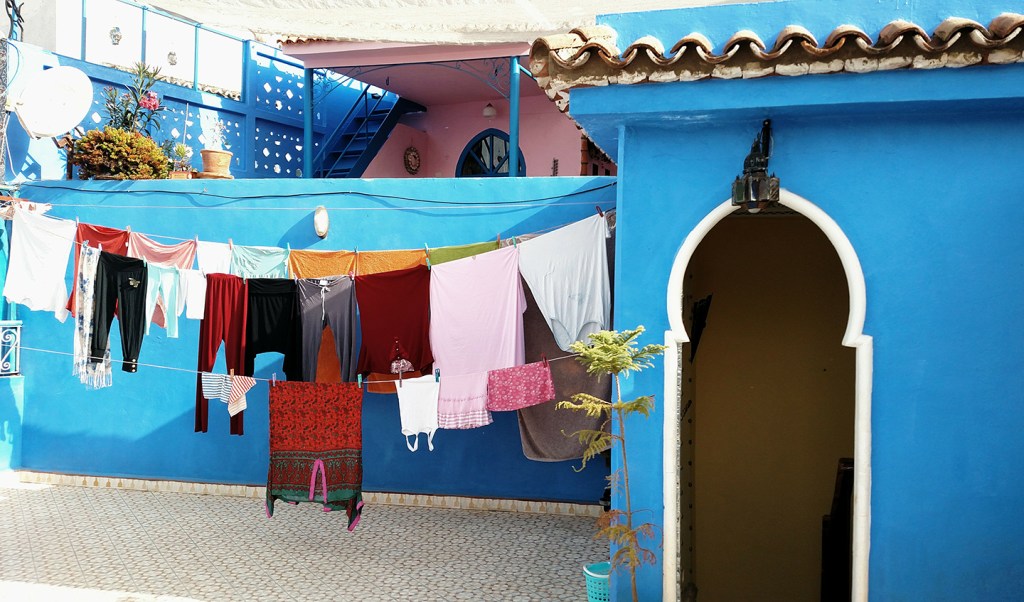

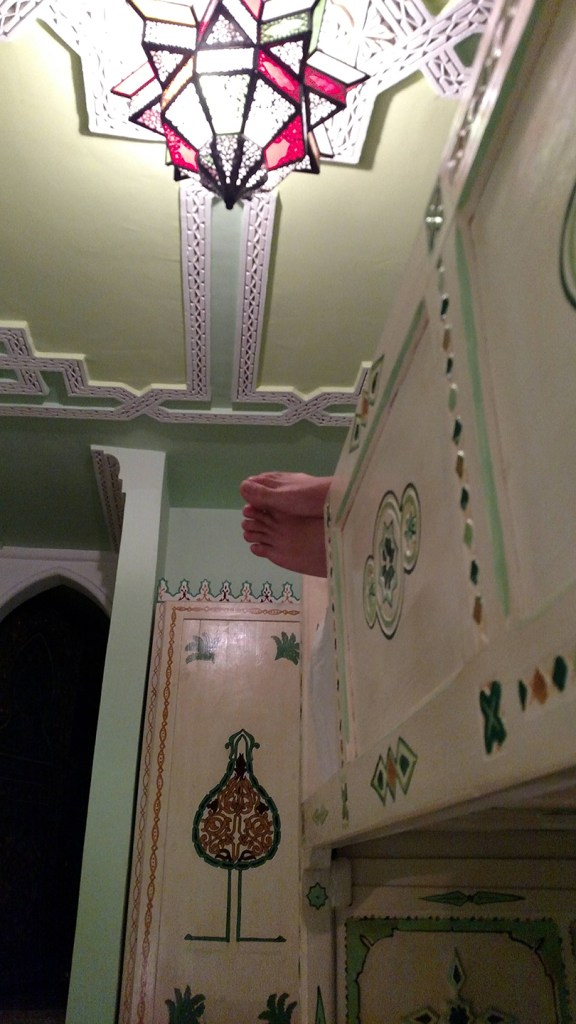
The medina, the historic old quarter, is a maze of twisting, winding, hilly streets with blue-washed walls, stairs, and doors. We wandered for hours, entranced by the narrow blue passageways, poking into shops here and there, talking with storekeepers, friendly but insistent.

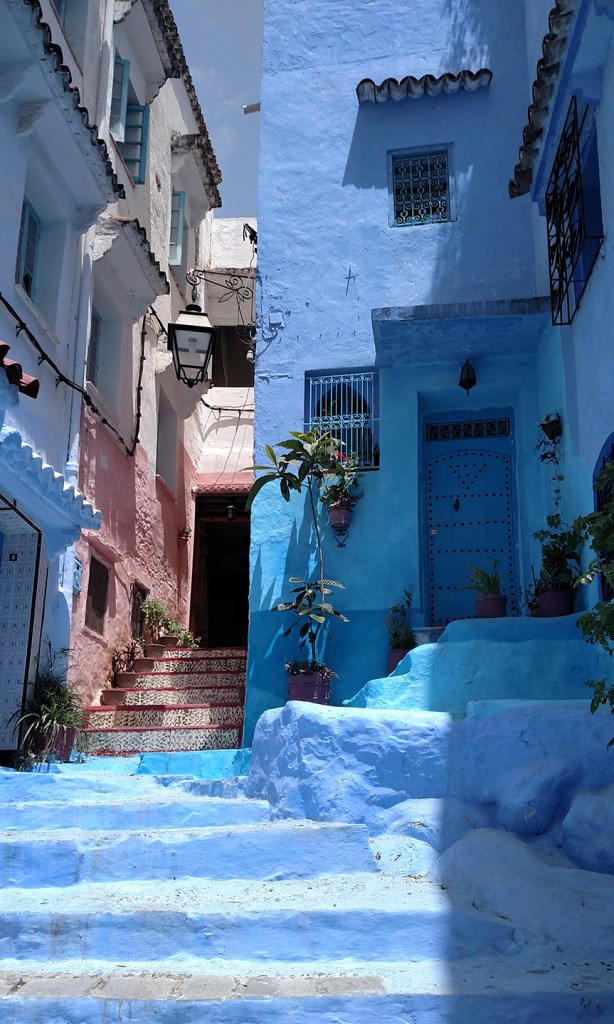

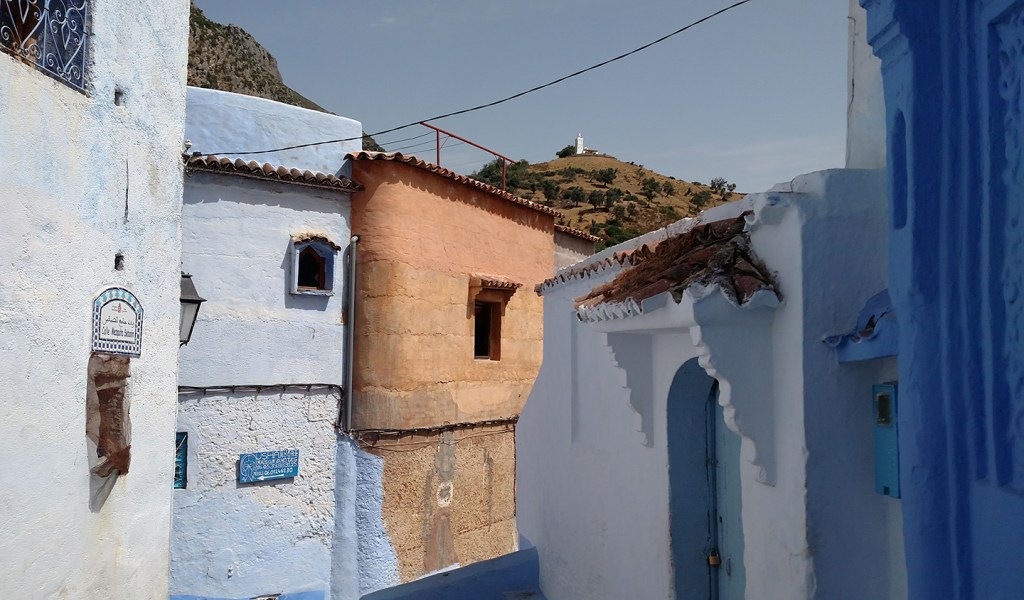

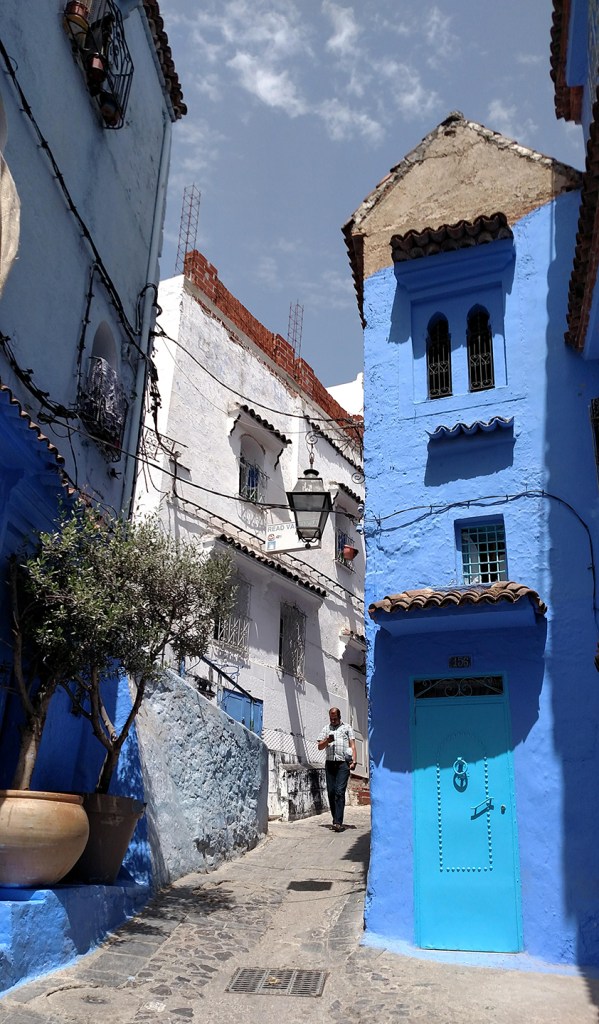
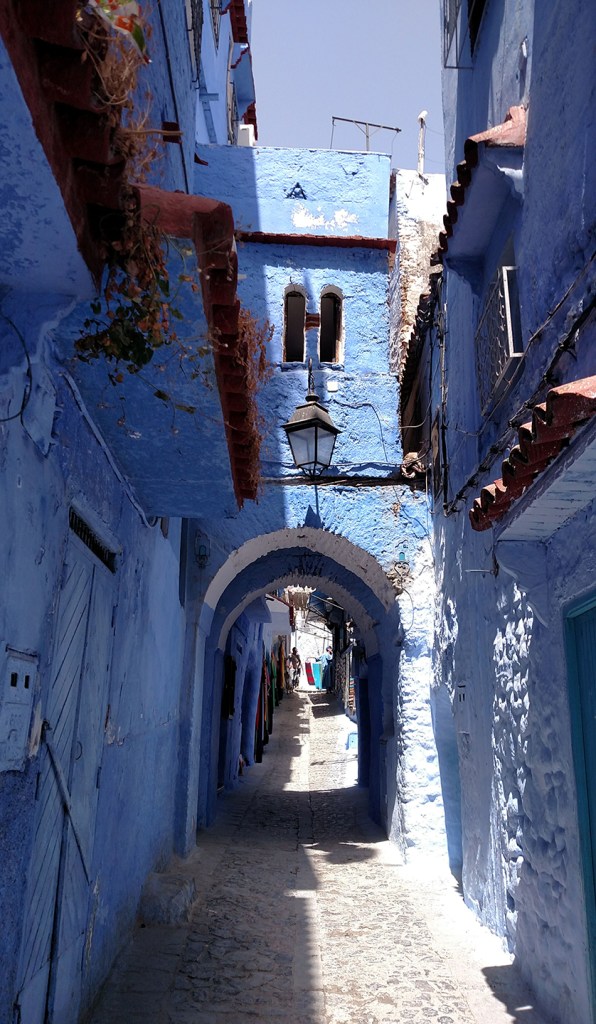
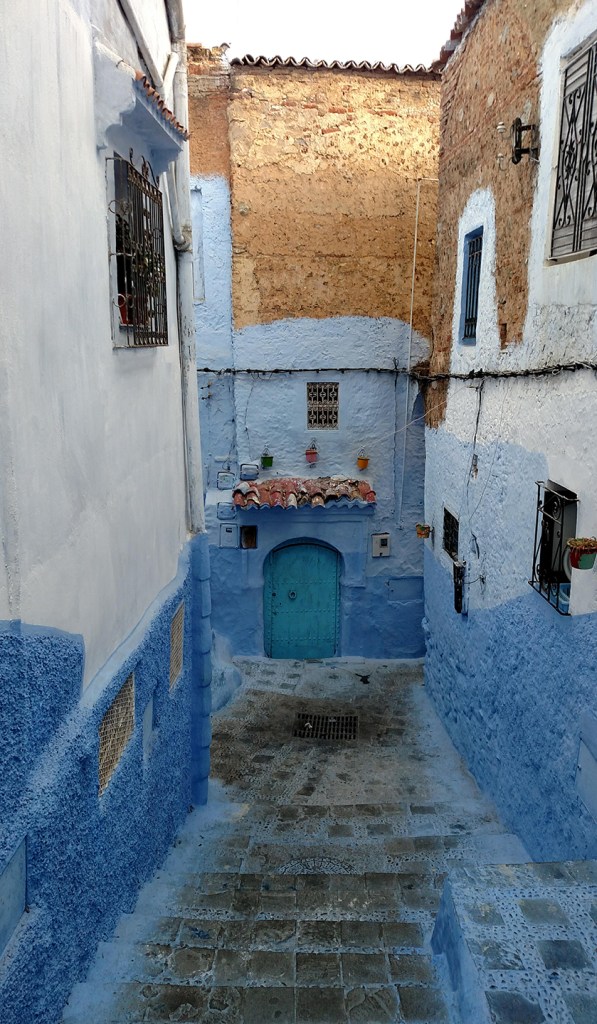
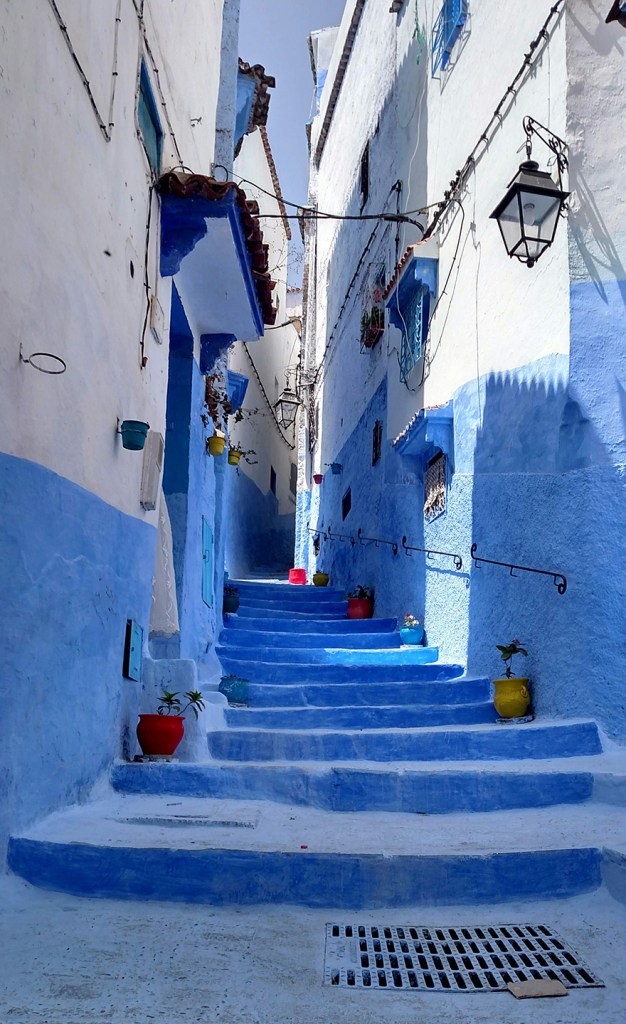
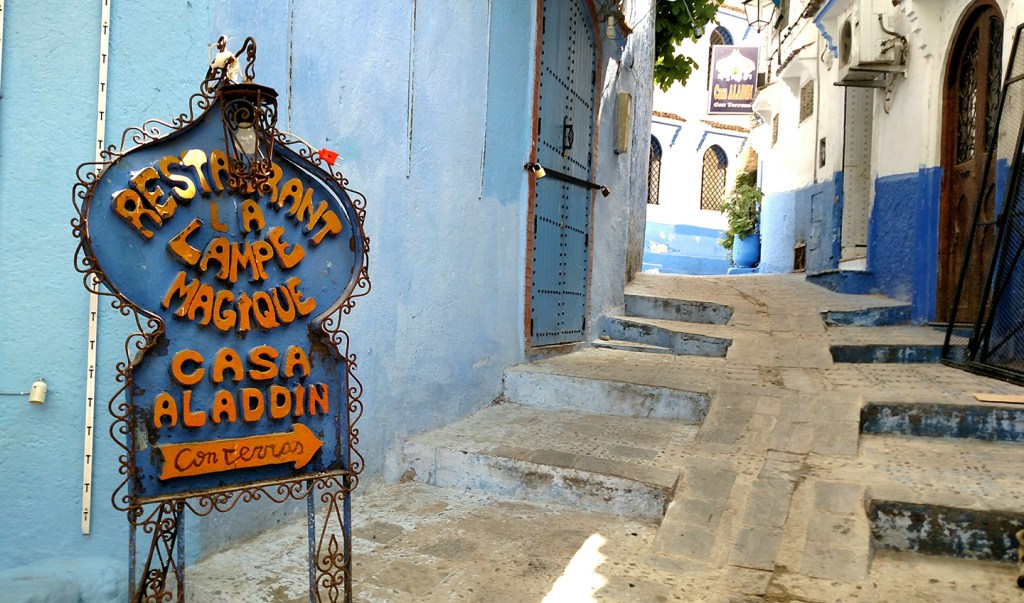
A market rimmed Place Outa el Hammam, the center of town. Colorful carpets, pottery, spices could be found in the medina and around the town streets.



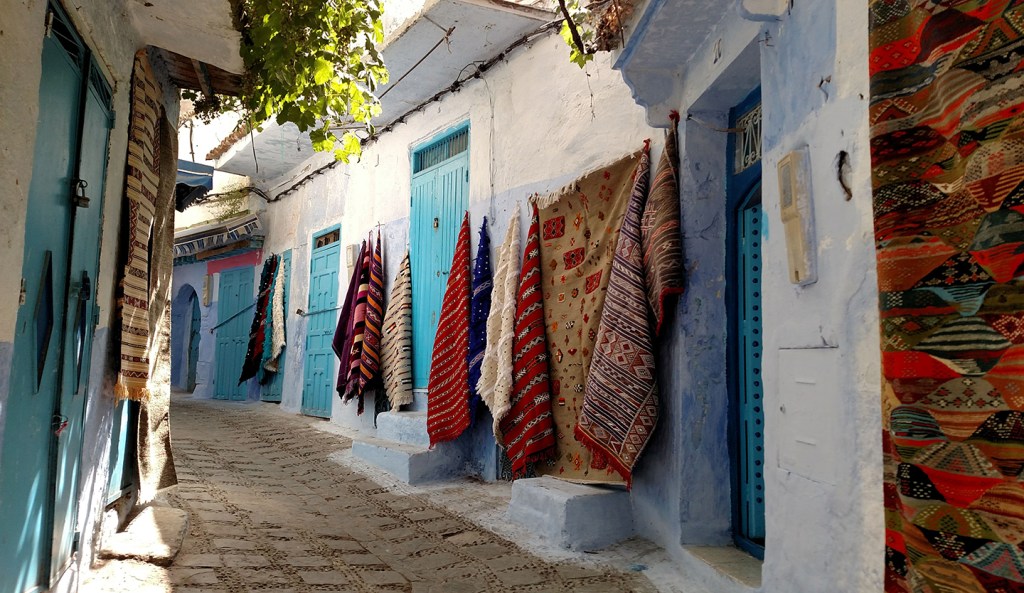

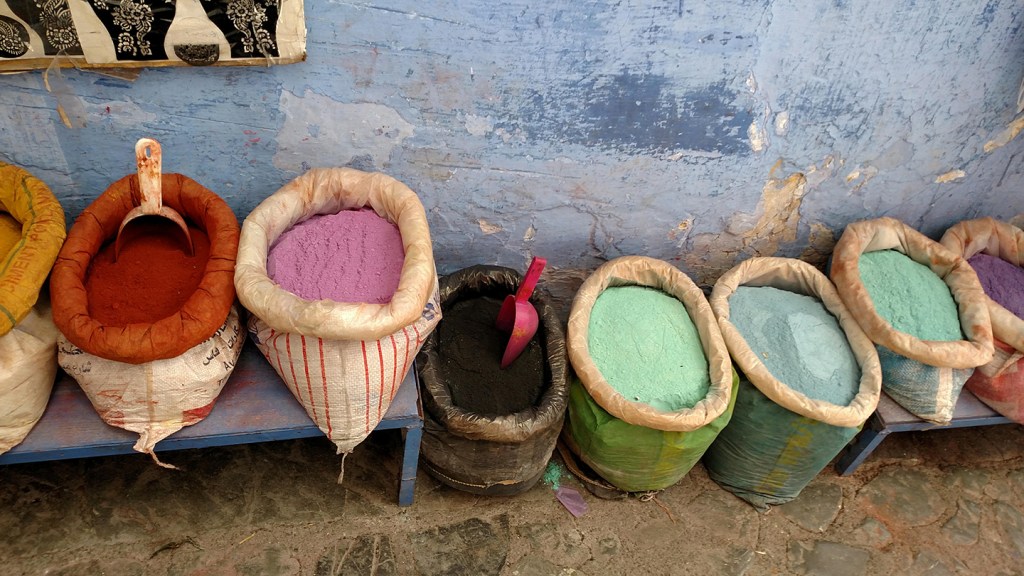
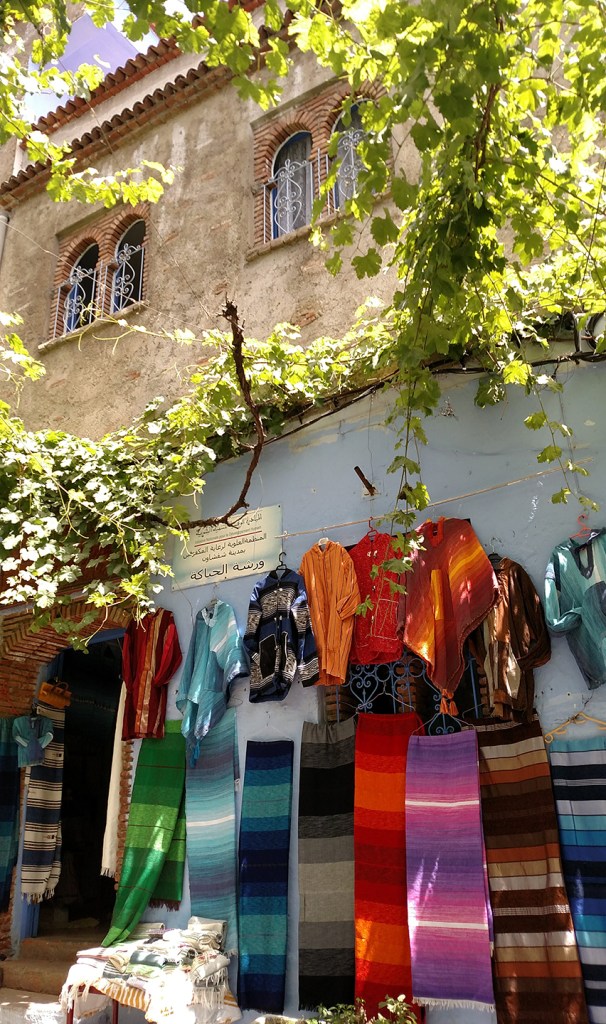
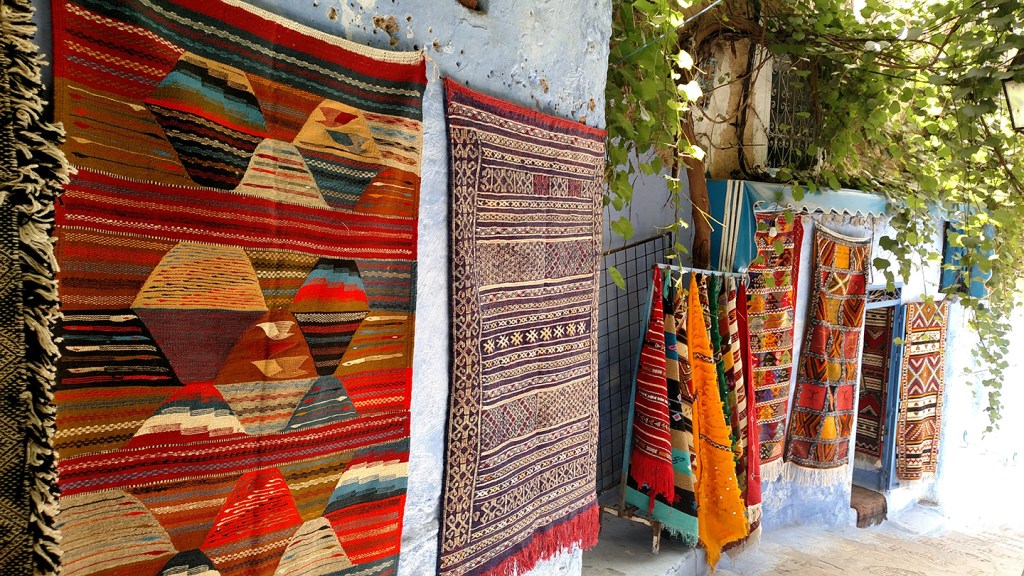
We followed children and families down to a pool, a welcome break on a hot day.
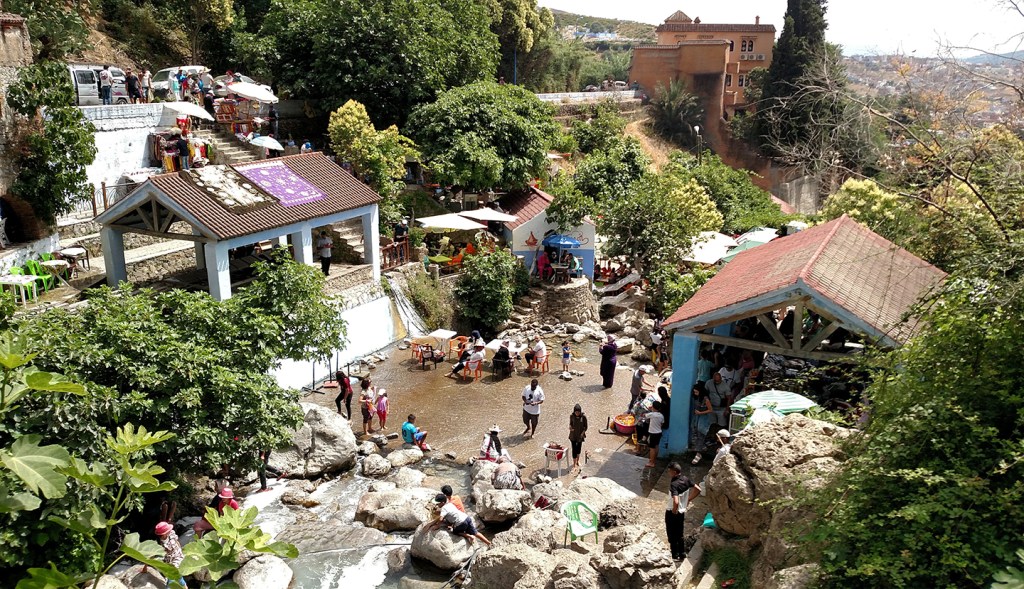



A friend asked readers of her novel, Two Spoons of Bitter by Sonja Mongar, to photograph themselves reading the book around the world.

Morocco series: Marrakech, Essaouira, Tangier, Chefchaoen
Please do not download or reproduce images from this site. ©
Your comments are welcome!
Popular posts/stats/categories
Email me at: Ruth@RuthRosenfeld.com
Follow me on: Facebook Instagram BlueSky Blog
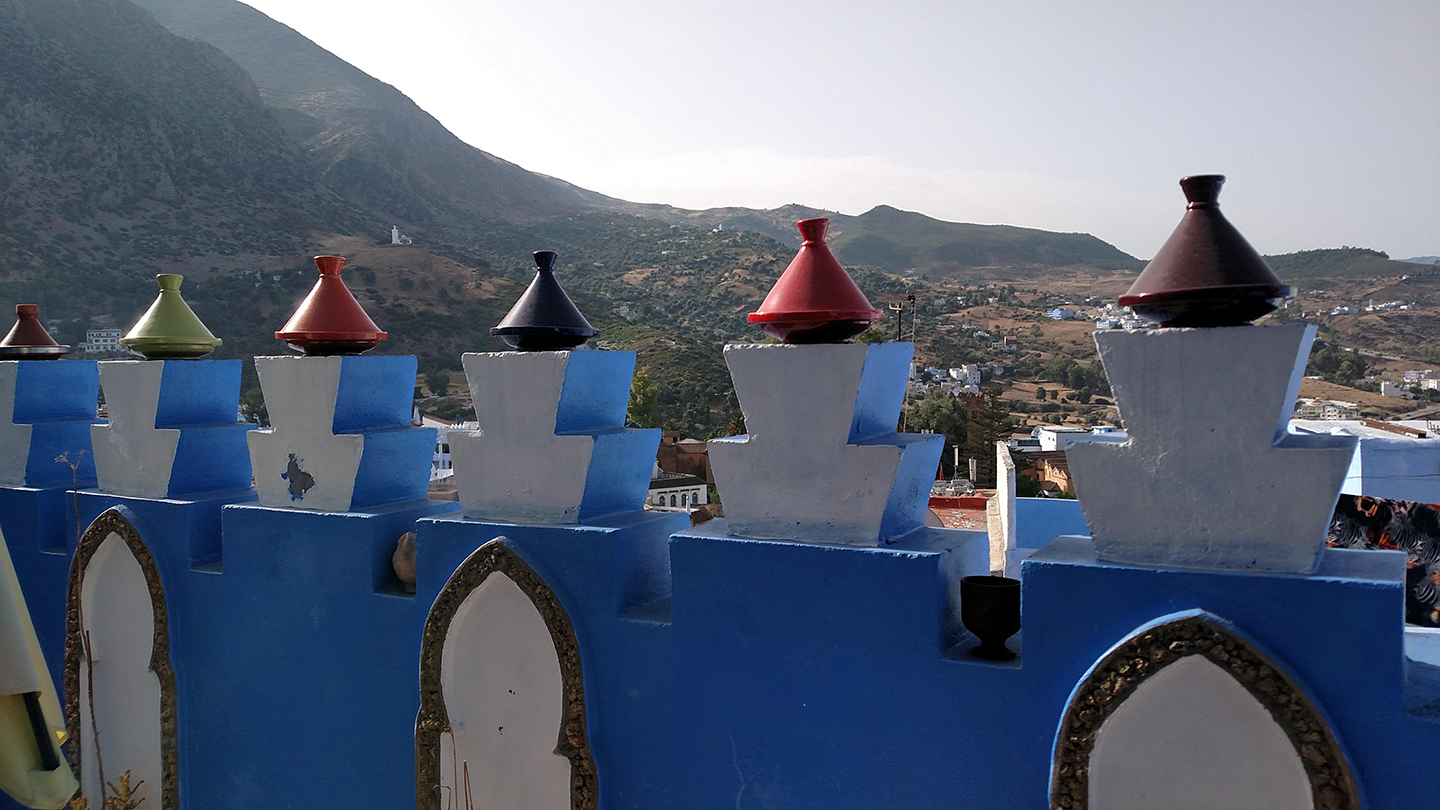
It is beautiful! And very, very blue. Chefchaouen looks like a perfect place to wander and take photos. Thanks for sharing and have a good day 🙂 Aiva xx
LikeLiked by 1 person
It is exactly that! Thanks for your visit, Aiva.
LikeLiked by 1 person
Simply wonderful 💙💙💙
LikeLiked by 1 person
Thanks, Luisa! I appreciate your blue hearts! 🙃
LikeLiked by 1 person
They are blue to match your spectacular photos 🙏
LikeLiked by 1 person
Isn’t it stunning – we were there a few years back – and that orange juice!!
LikeLiked by 1 person
Yes!!
LikeLike
Absolutely love the blue walls, stunning photographs. I have always wanted to there but it has not happened yet. One day… hopefully soon. Thanks for sharing the images.
LikeLiked by 1 person
It is a charming town, hope you get there someday. Thanks for your visit and leaving a comment!
LikeLiked by 1 person
Hi Ruth,
The Moroccan blue really pops in your photos. Love the photo of you, just lovely.
LikeLiked by 1 person
Thanks, Michelle. Hard to take a photo in this place without an emphasis on blue!
LikeLiked by 1 person
I didn’t visit Chefchaouen during my time in Morocco, but it’s an omission I hope to rectify one day. Your photos are beautiful, I especially love the one with bags of spices (?) set against the blue wall. There’s something special about meals in general, but breakfast in particular, that’s served in multiple small bowls and plates. An array of dishes for breakfast seems so luxurious and distant from one’s usual bowl of cereal.
LikeLike
Thank you, Leighton. I do love the array of little dishes, figs, jellies, condiments, even the breads. It reminded me of Japan and other east Asian traditions. Westerners always seem to be leaning toward fast food, even at breakfast!
LikeLiked by 1 person
The town looks so exotic. I had to do a double take on the second photo–at first glance it looks Tibetan. The sky-blue architecture is pleasing especially when contrasted with non-blue walls.
LikeLiked by 1 person
I can see the influence of middle eastern architecture, even Tibetan. The colors are captivating.
LikeLiked by 1 person
Beautiful and blue Ruth. So many great photo ops. What is the significance of the tagines on the wall, I wonder? Thanks for sharing. Allan
LikeLiked by 1 person
I thought the tajines were an unusual decoration, but didn’t ask. But lovely, in many deep colors. Thank you, Allan.
LikeLike
This looks stunning, I would love to be able to take photos here! And that riad looks and sounds the perfect place to stay, with those wonderful views and tempting breakfast!
LikeLiked by 1 person
There was a photo waiting around every corner. You would love it!
LikeLiked by 1 person
Breakfast looks delicious, Ruth. Was there ever an explanation as to why so much blue is used on the exterior walls and doors? The shade is pleasing nevertheless. Also, I like the stair/ramp passing by “Casa Aladdin” – works for walkers as well as wheels 🙂
LikeLiked by 1 person
I have seen varied explanations for the blue, most common is that the Jews brought it as one of their customs, but I’ve never heard of that from anyplace else before. One website suggested six or seven reasons. Your guess is as good as mine!
LikeLike
Chefchaouen was my favorite city I visited in Morocco– not only because it was so vibrantly blue, but also I actually found the vendors to be less-aggressive with selling souvenirs and whatnot. The city felt a lot more relaxed and easy-going compared to the bigger ones like Marrakech and Fez. I’d return to see more! Thanks for taking us on your journey throughout Morocco; I look forward to reading where you go next!
LikeLiked by 1 person
I agree that the vendors were less agressive, a welcome change. Thanks for your comment, Rebecca.
LikeLiked by 1 person
As usual, you have captured visual beauty through your photography and words. I have always wanted to go to Morocco. Seeing your photos has only made the desire stronger.
LikeLiked by 1 person
Thanks so much! I hope you get to Morocco in your travels.
LikeLike
Another Moroccan city I’ve longed to visit. Beautiful photos. My fave is the laundry 😁
Alison
LikeLiked by 1 person
Thanks! It’s one of my favorites too. ☺
LikeLiked by 1 person
Your pictures of this charming town are so lovely. Blue is actually my favourite colour. Some of those spices have some unusual colours. I wonder what the pink one is.
LikeLiked by 1 person
Thank you! I have no idea about the pink spice. 🙃
LikeLiked by 1 person
This looks like everything we wanted Jodhpur in India to be and wasn’t!
LikeLiked by 1 person
I’m surprised! I’ve seen photos of Jodhpur but have never gotten out of the Golden Triangle area in India. Chef. is a small town, nowhere near the size (and bustle) of Indian cities, so it was charming and kind of intimate.
LikeLike
It’s a very small area and even there not many homes are blue anymore.
LikeLiked by 1 person
Oh well, just the blue neighborhood?
LikeLike
The colors are so captivating!
LikeLiked by 1 person
I have speculated that the brilliant warm colors of Moroccan carpets, tiles, etc are perhaps to make up for the monochromatic desert landscape.
LikeLiked by 1 person
Wow, the blue is just so vibrant. I love all the narrow lanes and beautiful colours 🙂
LikeLiked by 1 person
I did too!
LikeLike
What a lovely place … it’s so blue and white! And the breakfast looks interesting, but delicious – I will probably spend some time there! You have amazing photos here Ruth … must have been a memorable trip!
LikeLiked by 1 person
Thank you, Corna! I hope you get there. It is entrancing.
LikeLiked by 1 person